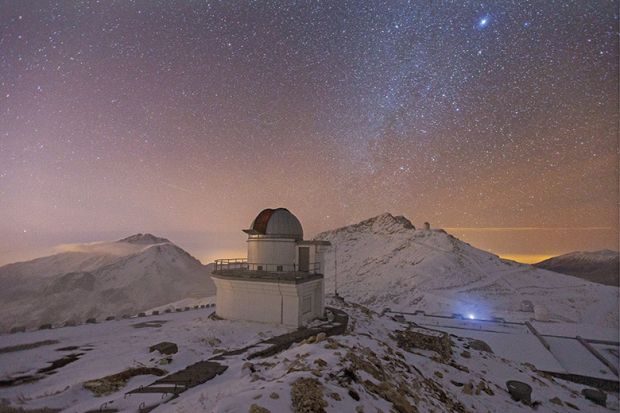Plato had it right when he said that astronomy “compels the soul to look upwards”. The universe makes for beautiful images and stories littered with superlatives. Astronomers draw on most of modern physics, from gravitation to quantum mechanics, and drive new discoveries in regimes that we could never reach in the laboratory. We develop cutting-edge instrumentation for telescopes on Earth and in space. And our field has a history spanning thousands of years, ever since those first souls looked up and marvelled at the view.
Neil deGrasse Tyson’s aim is, on the face of it, daunting – to convey something of all of this to a level of “foundational fluency” in only 200 pages. But the presenter of the radio programme StarTalk and the television documentary series Cosmos: A Spacetime Odyssey, one of the most experienced science communicators around, is up to the challenge.
The book is adapted from a series of essays originally written in 1998-2007, and this shows in the format: there’s some repetition, and the flow between chapters feels rather random. The upside is that each chapter stands alone, perfect for the busy reader who wants to dip in and out. The breadth of topics is excellent, and includes the Big Bang, dark matter, dark energy, the formation of the elements and the search for life elsewhere in the universe. There is no stinting on physics, and astronomers get some stick for the century-long gap between the discovery of radiation beyond the visible and the development of telescopes in these wavebands. The style is vintage Tyson – engaging, chatty and littered with historical and linguistic anecdotes (including a lovely reference to petunias, in a nod to the late, great Douglas Adams).
There are some surprising omissions. There is relatively little on the birth, life and death of stars. The stars dominate our night sky, and I’m still amazed by the fact that we understand the processes that differentiate our Sun from the red supergiant Betelgeuse and the white dwarf Sirius B. Supermassive black holes, such as the monster in the centre of our galaxy, get barely a mention, and the chapter on telescopes does not do justice to the full range of new technology at our disposal. However, this is understandable in a slim volume.
Although many scientists are namechecked, I was disappointed that only three women made the cut: Vera Rubin (dark matter pioneer), Jocelyn Bell (discoverer of pulsars) and Carolyn Shoemaker (of comet fame). Stellar physics without Annie Jump Cannon or Cecilia Payne-Gaposchkin, the cosmic distance scale without Henrietta Swan Leavitt, radio astronomy without Ruby Payne-Scott? This is a book that aims to inspire the next generation of scientists, and women have played, and continue to play, a major role in our field.
Tyson opens the book by discussing the allure of astronomy in popular culture. He takes a more sombre view at the end, with a sober assessment of our place in the cosmos and a plea to embrace this cosmic perspective. In an era where it feels that we have to defend science, it is the right way to finish: marvel at the universe, enjoy puzzling it out, and do your utmost to protect our neighbourhood – even if you’re busy.
Anna Watts is associate professor of astrophysics, University of Amsterdam. She works on neutron stars and the next generation of X-ray space telescopes.
Astrophysics for People in a Hurry
By Neil deGrasse Tyson
W. W. Norton, 224pp, £14.99
ISBN 9780393609394
Published 2 June 2017
Register to continue
Why register?
- Registration is free and only takes a moment
- Once registered, you can read 3 articles a month
- Sign up for our newsletter
Subscribe
Or subscribe for unlimited access to:
- Unlimited access to news, views, insights & reviews
- Digital editions
- Digital access to THE’s university and college rankings analysis
Already registered or a current subscriber?




